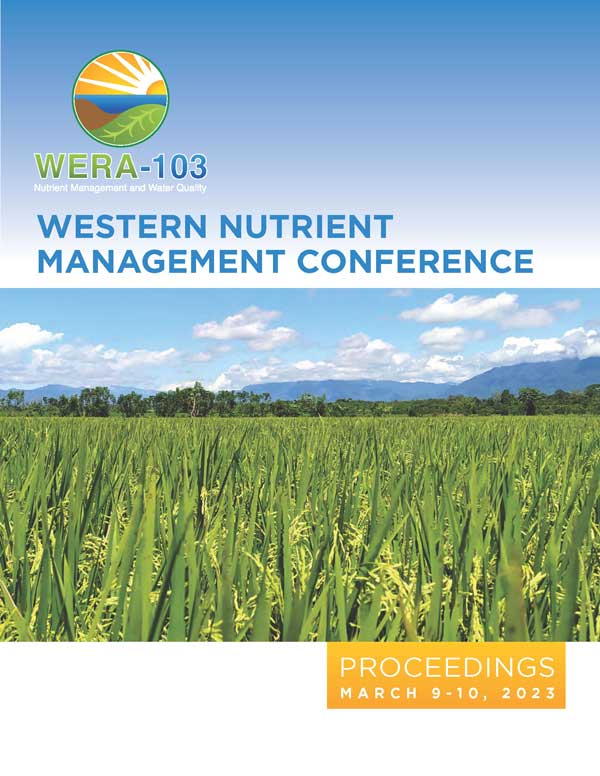Download the Conference Proceedings
Get your copy of the 2023 Western Nutrient Management Conference Proceedings today! Download the PDF file and view all of the available proceedings.
Proceedings
Authors
| Filter results1 paper(s) found. |
|---|
1. Improved Small Grain Nitrogen Use Efficiency with California Site-specific Decision SupportSmall grains are grown throughout the state of California (CA) on approximately 500,000 acres annually. They are generally fall-sown and grown during the winter months when most precipitation occurs. Because precipitation and irrigation patterns vary across CA and there is a strong interaction between total water and plant available nitrogen (N), determining fertilizer N application recommendations is particularly challenging in this cropping system. With recent fertilizer price volatility,... N. Clark, M. Lundy, T. Nelsen, M. Leinfelder-miles, S. Light, G. Galdi, T. Getts, K. Mathesius |
